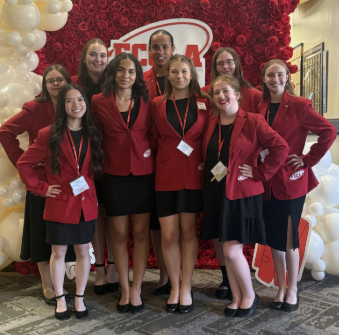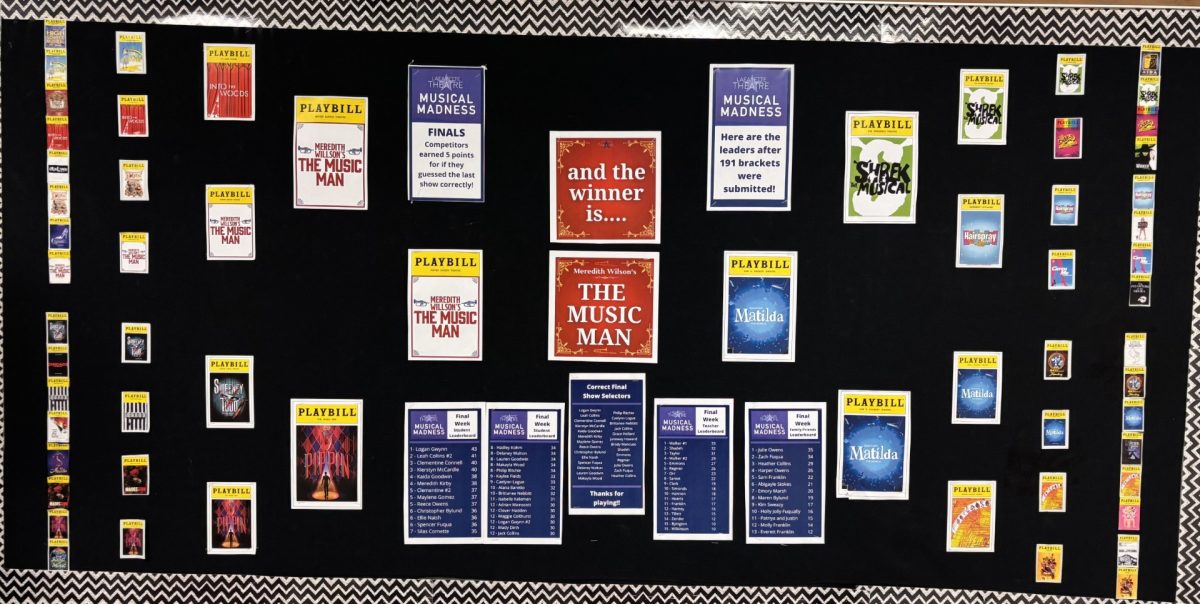Do you like writing articles, doing photography, or drawing comics? Have you ever been
interested in taking up journalism? Then, consider joining the Lafayette Times.
The Lafayette Times is a student-led elective where members create content for the school’s newspaper. They are commonly assisted by the Co-Editors-in-Chief, Joey Hester and Eva Alcaraz-Monje, and Mrs. McPherson, the teacher and journalism advisor. There are many opportunities for staff to take on different roles, such as staff writer, photographer, comic artist, or editor (copy, photo, comic, etc.).
When you first think of journalism, you may think of writing articles, which is exactly what a staff writer does. After getting assigned or coming up with an idea for an article, writers conduct research and, if needed, interviews. They then take the information obtained and write a 300-to-1000-word article using the Associated Press (AP) style. AP style is the industry standard for journalistic writing, and it includes rules and guidelines on how writers are supposed to write.
Any good article needs a photo to go with it so that staff can opt for the role of photographer. A photographer can take their pictures or obtain pictures and permission for use from another photographer for an article or a photo gallery. A photo gallery is a collection of 20 to 40 photos taken for an event or topic of interest. A good photo has a caption beneath it to give context behind the image. It must include the photographer’s name, when and where the photo was taken, who the subjects are, and what’s happening in the photo.
While most staff members typically go for the previously mentioned options, some more artistic students act as comic artists. Comic artists start by coming up with what they want to express. They often use recurring themes related to common issues within Lafayette High School, such as what goes on in our bathrooms, the issues with our clocks, or that aliens may be causing mayhem and chaos within our school. They then draw this idea out digitally on a drawing tablet or traditionally using pencils, pens, and paper (sometimes with color). They then take a picture or screenshot of what they have drawn out, add a caption and a title, and then they’re done.
And, of course, where would any good newspaper be without its editors? Once a writer is done writing, the editing process begins. An editor looks at an article and ensures everything is running smoothly. They fix simple mistakes like punctuation and capitalization, ensure nothing sounds like a run-on sentence, and keep the article engaging and journalistic. The editor makes comments and sends the article back to the writer. The writer fixes what was wrong and sends it back to the editor, so the cycle repeats until a perfect article is made. There are many kinds of editors, including editors for photography and comics, section editors with specific focuses, and the Co-Editors-in-Chief that look over every article.
At the end of the year, we all celebrate the graduating class, and the Lafayette Times likes to show our appreciation by giving graduating seniors a printed edition of the newspaper titled the “Senior Edition.” The Senior Edition takes around 2-3 months of work and includes senior spotlights, comics, retiree spotlights, and many more.
The Lafayette Times is a class you can join at the beginning of the school year called Journalism 1 under English Electives. There are currently two classes, one during A4 and one during B1. Editor Isaac Critchfield claims “This is a great class,” and we, as the Lafayette Times, couldn’t agree more. And don’t forget to get with The Times.















